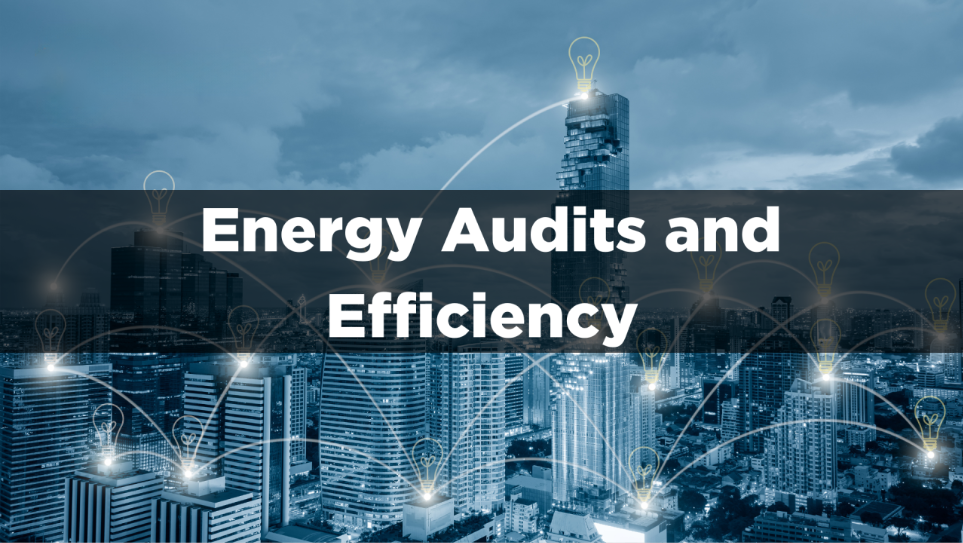
As demand for energy is rising, choosing sustainable solutions has become even more important. Adopting sustainable energy solutions provides incentives like cost reduction, risk mitigation, efficiency in operations, attracting investors, and fulfilment of future needs. In the power sector, Smart grids provide a modern, sustainable way to improve how power is delivered.
A smart grid is an upgraded electrical grid that uses automation, communication, and information technology systems to monitor and control power flow from generation to consumption. The availability of real-time control helps match power supply with demand, making it easier to use renewable energy and lowering peak power costs.
In other words, a smart grid system represents a shift from the traditional grid system. Unlike traditional grids, which rely on over-engineering (adding extra capacity and resources to handle rare demands) for security, a smart grid is more cost-effective, flexible, responsive, and designed for reliability and self-healing operations. In short, a smart grid is a modern, intelligent system for managing electricity that helps us save energy, cost, and make better use of renewables.
Key Components of a Smart Grid System
The smart grid includes components i.e. smart meters, sensors, advanced data analytics, and automated control systems.
1. Smart Meters: Smart meters are high-tech electricity meters that show how much energy we’re using in real-time. They send this data to the electric company, so they don’t have to check meters manually. This helps track our energy use, understand how to save, and even pay based on peak or low-demand times.
2. Sensors: These devices are placed across the grid to monitor power flow, temperature, and quality. They’re like the grid’s “senses,” letting it know if something’s wrong or repair is needed. This helps keep the electricity flowing smoothly and reduces unexpected blackouts.
3. Advanced Data Analytics: Advanced data analytics is like the brain of the grid, studying all the data collected from smart meters and sensors. It finds patterns, predicts when energy demand might be high, and spots issues like wasted energy or theft. This helps the grid run more smoothly and efficiently.
4. Automated Control Systems: These systems allow the grid to make decisions, like rerouting power if there’s a problem or balancing electricity when demand is high. This means fewer outages and faster recovery if something goes wrong. This makes the system more reliable.
Together, these components enable a more flexible and resilient grid that can accommodate the intermittent nature of renewable energy sources, which is vital for India’s grid integration efforts.
Understanding the Interplay between Solar Power and the Smart Grid
Solar power depends entirely on sunlight, implying that the energy produced varies during the day and season. This variation is known as “intermittency”. Solar panels produce more electricity when exposed to intense sunlight. However, if the weather changes or evening approaches, there is an abrupt effect on production output. With such unpredictable energy sources feeding the grid, it is necessary to have a grid that is highly adaptive (in terms of supply and demand).
Smart grids address this by using automated controls and communication systems that dynamically respond to these changes, helping to balance supply and demand as solar production rises and falls. One key feature of smart grids is their ability to integrate energy storage systems (ESS), which store excess solar power generated during periods of peak sunlight and release it during times of lower generation, such as at night.
Smart grids are also known as self-healing or self-adaptive grids. Essentially, advanced smart grid technology enhances the grid’s capacity to respond in real-time to shifts in power flows, allowing for a more efficient balance between supply and demand.
Smart Grid v/s Traditional Grid
A traditional grid sends power in one way, from plants to users, while a smart grid allows two-way flow and real-time adjustments. This flexibility helps it integrate renewable energy and respond to demand changes more efficiently. Here’s a comparison highlighting the key differences between traditional and smart grids:

Features of Smart Grid System
- Real-time monitoring: Constant tracking of electricity flow for quick adjustments.
- Automated outage management and faster restoration: Automatically detects outages and restores power quickly.
- Better energy management: Optimises how energy is used and distributed.
- On-site displays: Shows real-time energy usage for easy tracking and management.
- Web portals and mobile apps: Provides easy access to track and control energy use online.
- Opportunities to reduce and conserve electricity: Encourages smarter, more efficient energy use.
- Supports distributed generation: Allows consumers to produce and use their own electricity, especially from rooftop solar, with two-way energy flow and net metering for easy connection to the grid.
Regulatory Landscape for Smart Grids in India
Smart grids were introduced in India to create a more resilient and efficient power system that reduces energy losses, enhances reliability, and supports the integration of renewable energy sources. The government recognised the need for a modernised grid to meet growing energy demands and promote sustainable development.
The Ministry of Power (MoP) plays a pivotal role in India’s smart grid development through the National Smart Grid Mission (NSGM), a plan focused on modernising the grid with smart metering, demand-side management, and overall grid resilience to achieve long-term energy security. Businesses should adopt compatible technologies, implement energy-efficient practices, and participate in demand-response programs.
Moreover, the Central Electricity Authority (CEA) and the Ministry of New and Renewable Energy (MNRE) are also responsible for smart grid development. To support smart grid aims, both organisations play key roles. One establishes technical standards and safety guidelines, while the other promotes policies and incentives for solar rooftops, energy storage, and microgrids.
At the state level, State Electricity Regulatory Commissions (SERCs) adapt regulatory frameworks to meet regional needs, fostering smart grid adoption and ensuring utilities comply with NSGM guidelines. Supporting renewable integration, India’s roadmap aims to deploy 250 million smart meters and achieve full renewable integration by 2027.
A key component of this framework is the Renewable Purchase Obligation (RPO) and Energy Storage Obligation (ESO), which mandates that obligated entities such as distribution companies (DISCOMs), open access consumers, and captive power plants must source a specific percentage of their electricity from renewable sources. The smart grid system ensures seamless integration and efficient management of renewable energy, providing flexibility for entities to balance supply and demand, optimise energy storage, and comply with renewable energy mandates.
How Smart Grid Helps Obligated Entities
Obligated Entities: These entities are legally required to meet their RPO and ESO targets and include:
- DISCOMs (Distribution Companies): Distribution Companies (DISCOMs) provide the anchor infrastructure for smart grids and cities creating a need for value-added services and new business models. These companies distribute electricity to consumers, ensuring reliable supply and managing energy balance within their regions.
- Open Access Consumers: Consumers who purchase electricity directly from a private developer instead of relying on traditional GENCOs .
- Captive Power Plants: Facilities generating electricity primarily for their own needs.
- Independent Power Producers (IPPs): Private companies that produce and sell electricity, typically through long-term agreements.
- Large Commercial and Industrial Users: High-energy users who procure electricity directly from utilities or open access, managing energy demand and usage effectively.
Smart grids make it easier for obligated entities to meet renewable energy and storage requirements (RPO and ESO). They allow real-time control of energy, helping these entities use more renewable energy, rely less on fossil fuels, and meet regulations without hassle.
How Companies Can Use Smart Grids
Smart grid technology offers many benefits to businesses by enhancing efficiency, reducing costs, and improving reliability. Key benefits include:
- Effective Peak Load Management: They help handle peak energy times better. So, businesses can avoid extra charges, improve their quality of service and ensure grid reliability.
- Enhanced Asset Management: They track equipment health, helping businesses keep things in good shape and avoid breakdowns.
- Increased Grid Visibility & Self-Healing Capabilities: Real-time insights and automatic recovery systems minimise outages, ensuring continuous business operations.
- Seamless Renewable Integration: Facilitates renewable energy usage, making it easier for businesses to meet sustainability goals.
- Flexible Options like Time-of-Use (ToU) Tariffs & Demand Response (DR) Programs: Businesses can save by using energy during off-peak times or by participating in demand response programs
- Net Metering for On-site Generation: With net metering, businesses that produce their own energy (like solar) can use it or even share it with the grid.
By adopting smart grid solutions, businesses gain a competitive edge through cost savings, operational efficiency, and a more sustainable energy profile.
Conclusion
In conclusion, India’s move to smart grids is about making the electricity network smarter, more efficient, and more reliable. Smart grids use advanced technology to monitor and adjust power flow in real-time, helping reduce energy waste and better manage renewable energy sources like solar and wind. This shift means less reliance on fossil fuels, fewer power outages, and a more sustainable energy system. With government support and the involvement of private companies, smart grids are crucial for India’s goals of energy security and cleaner, greener power for the future.










